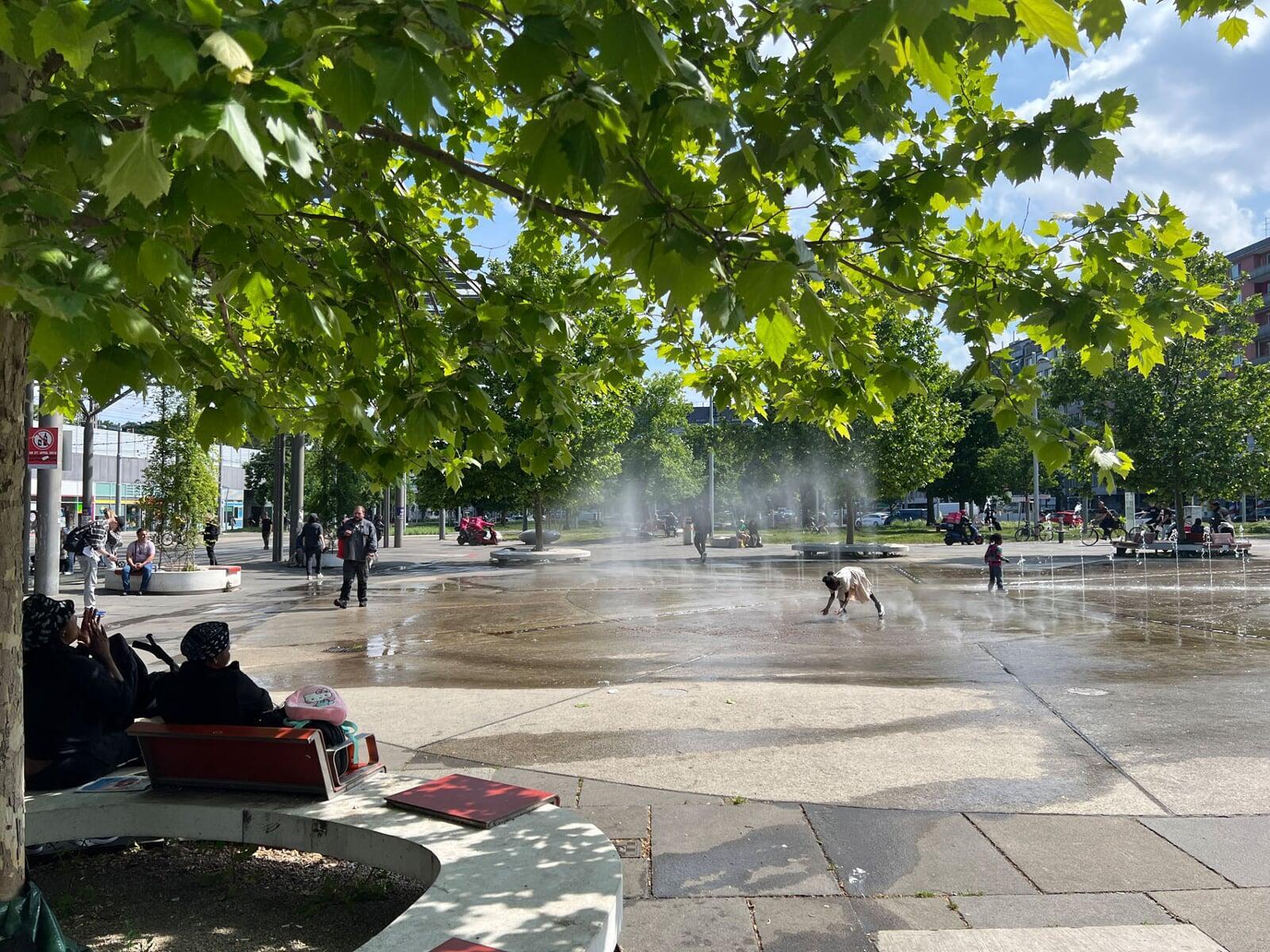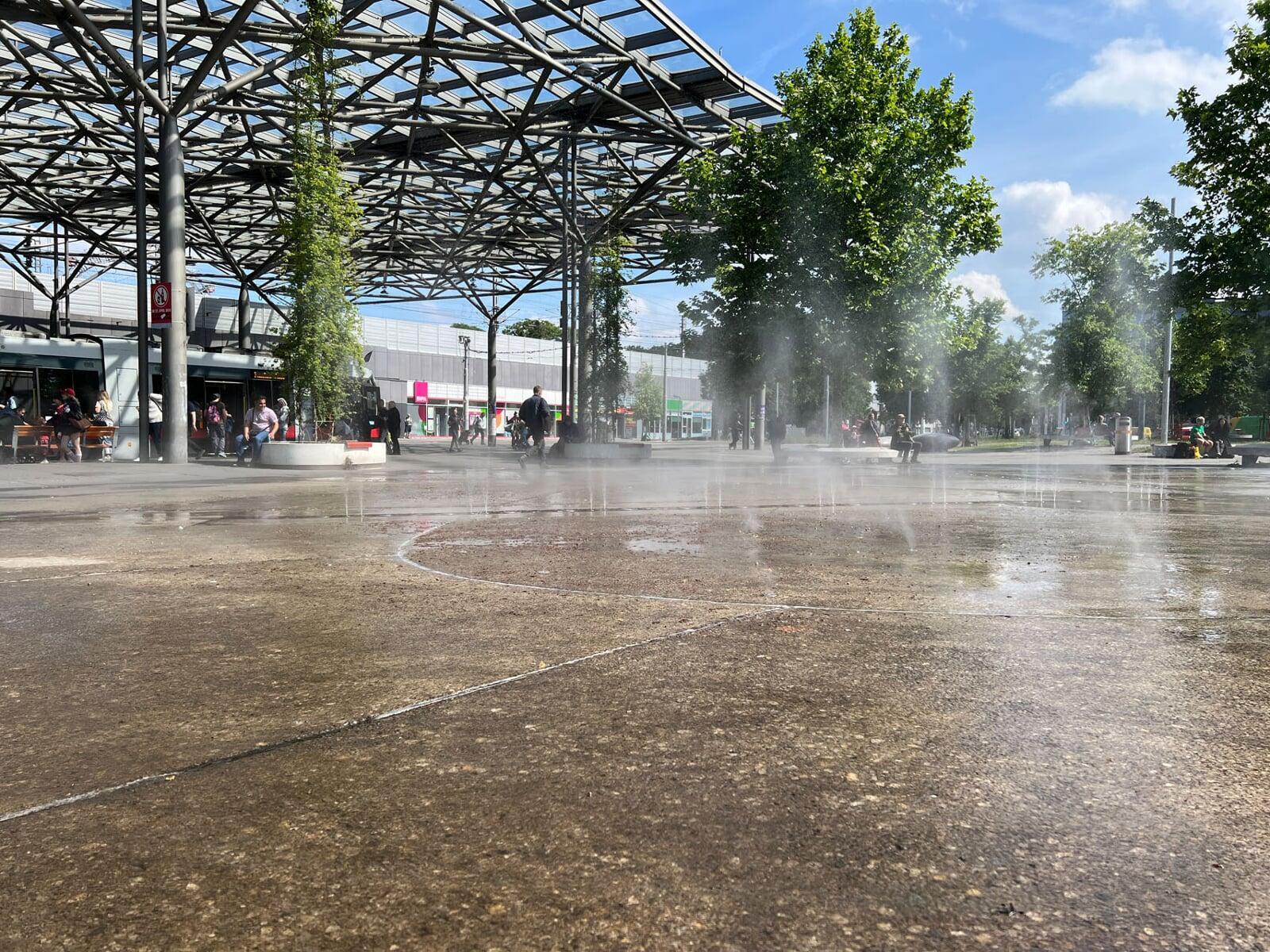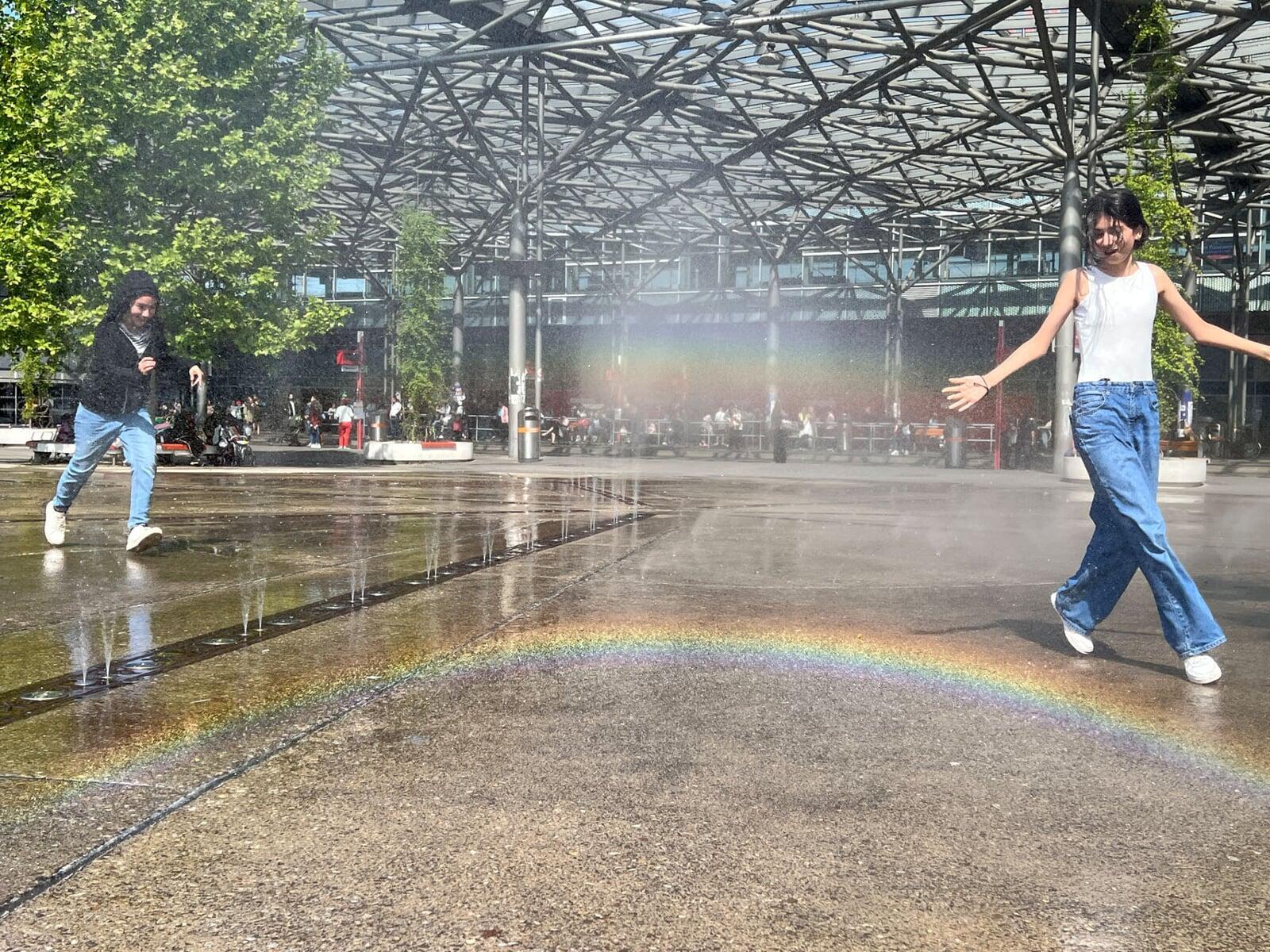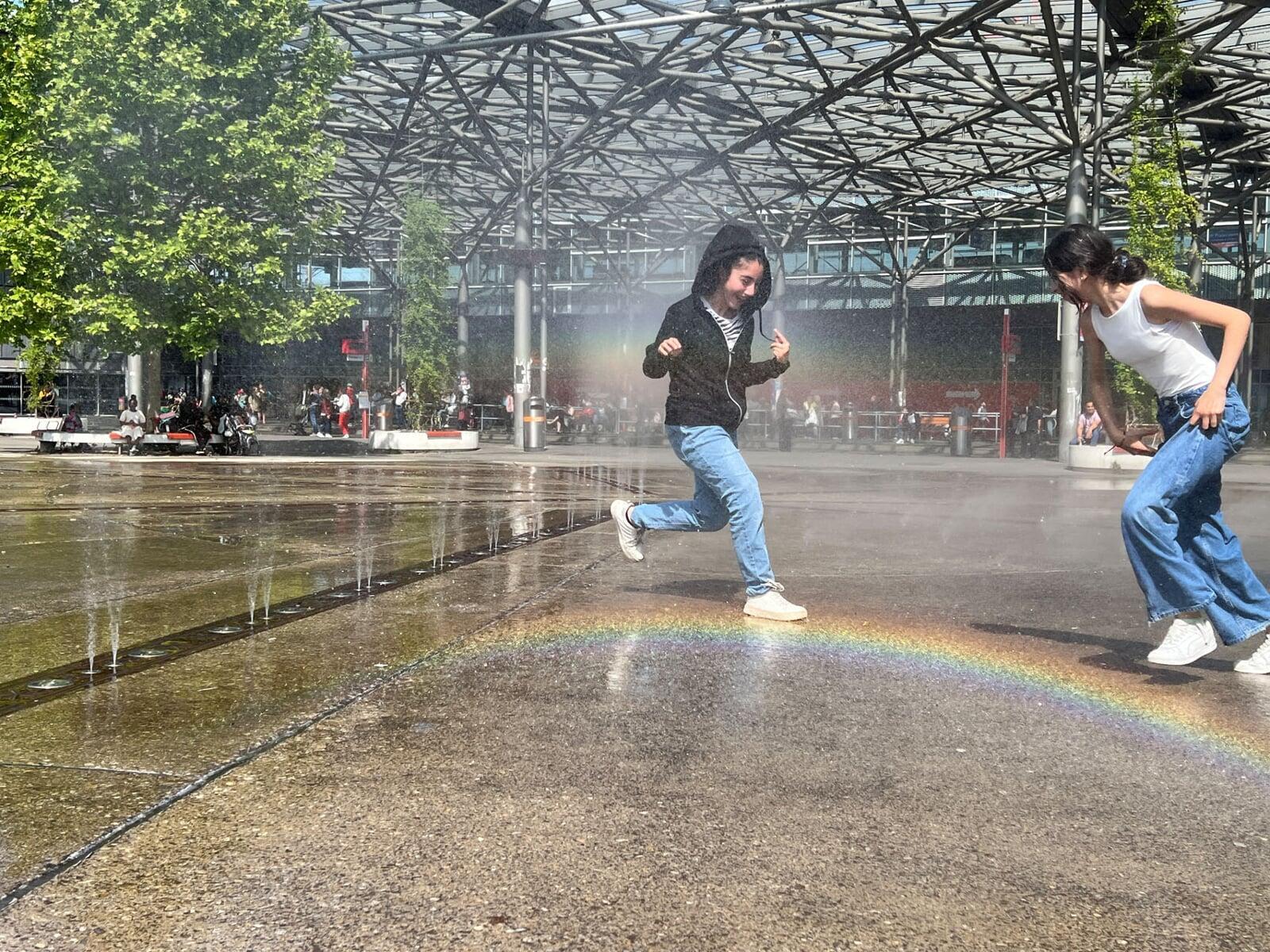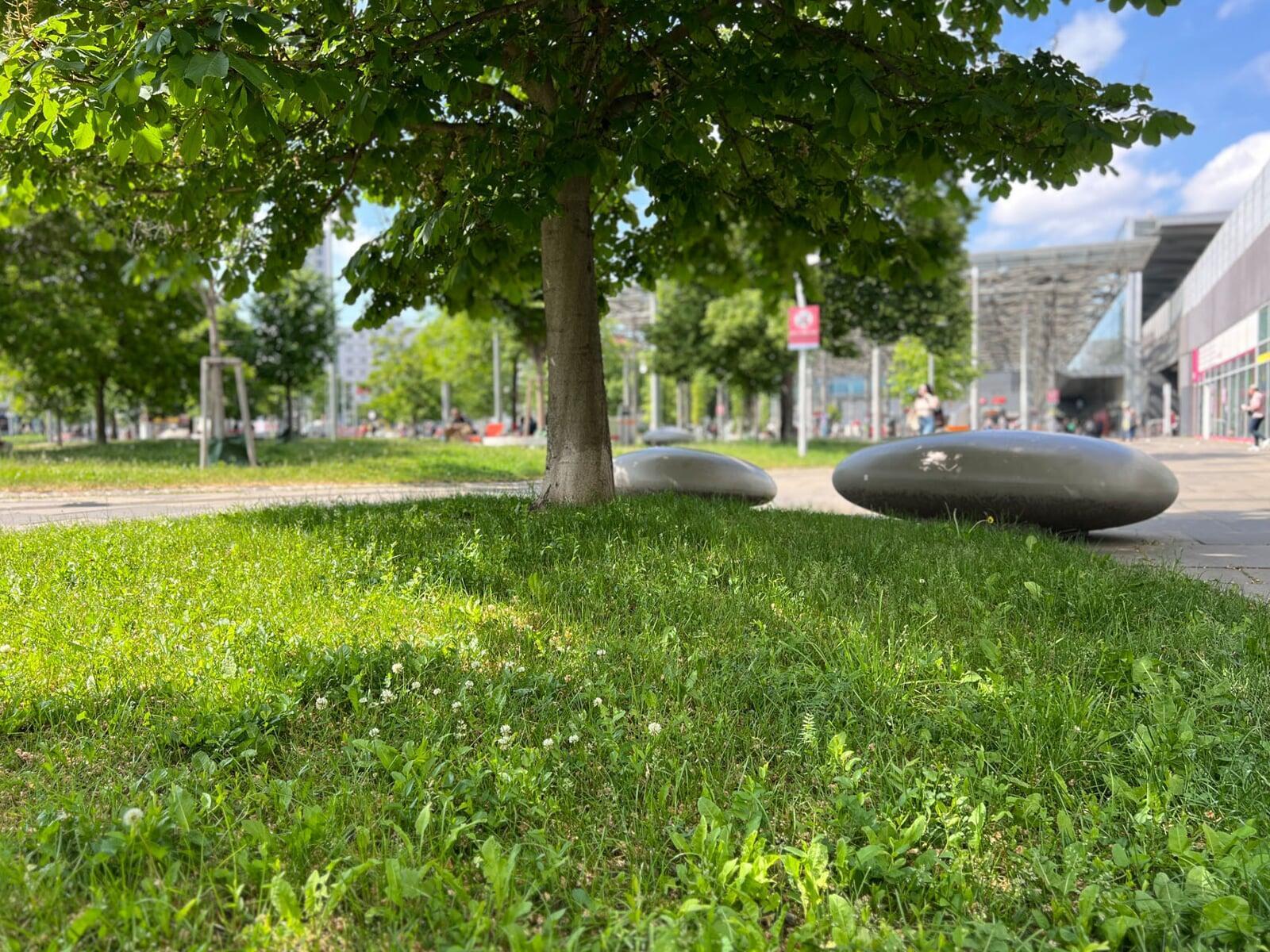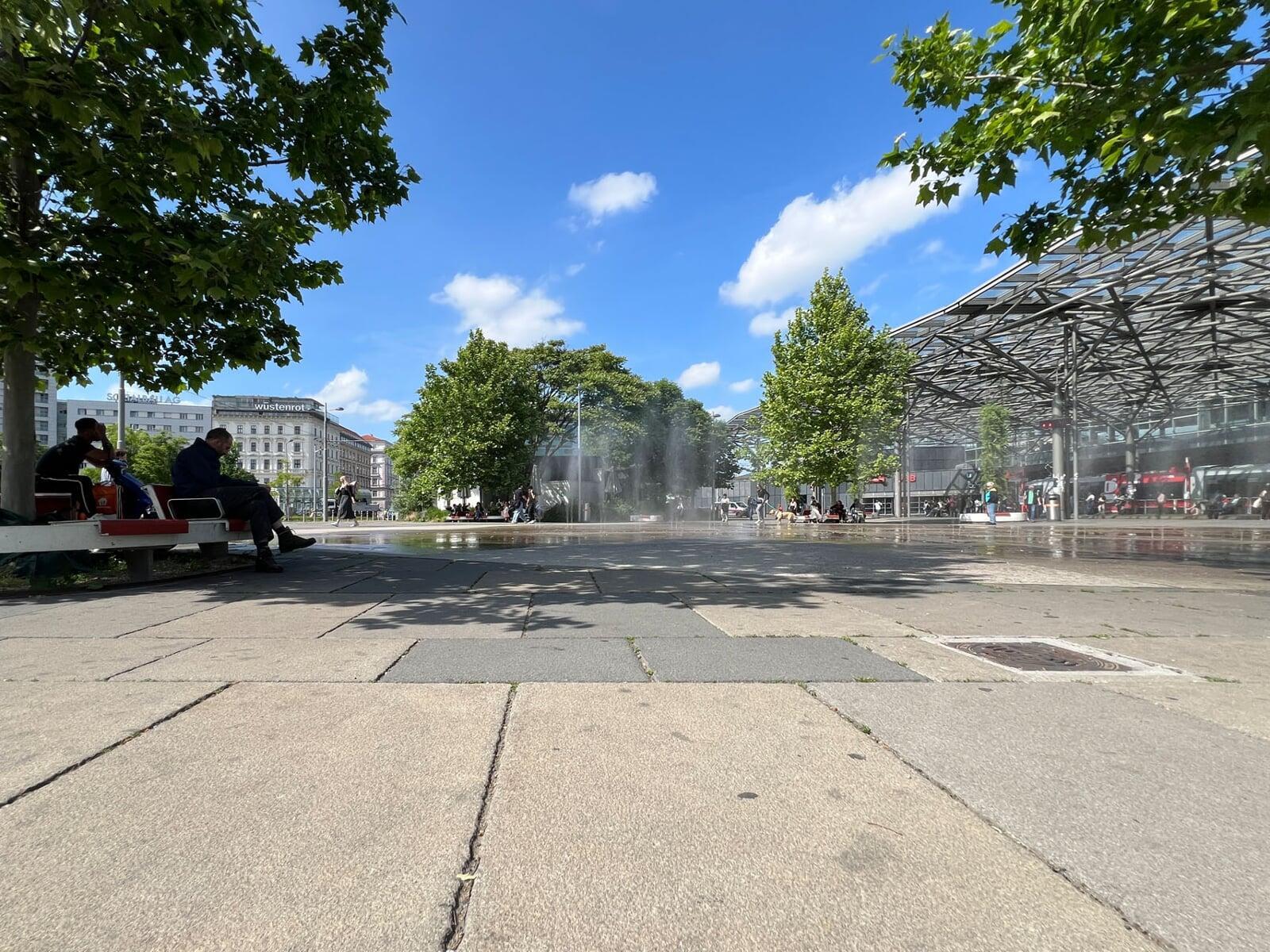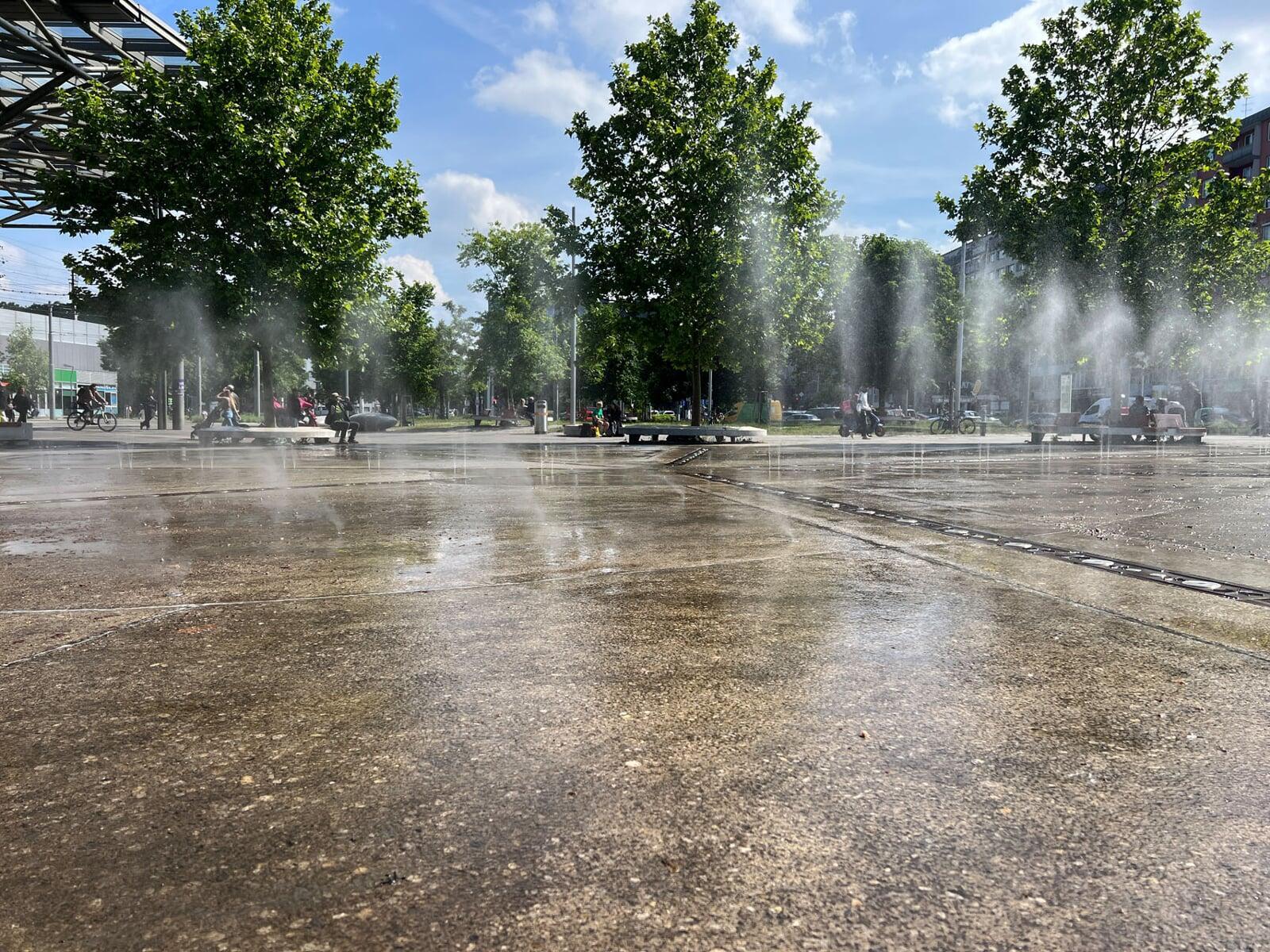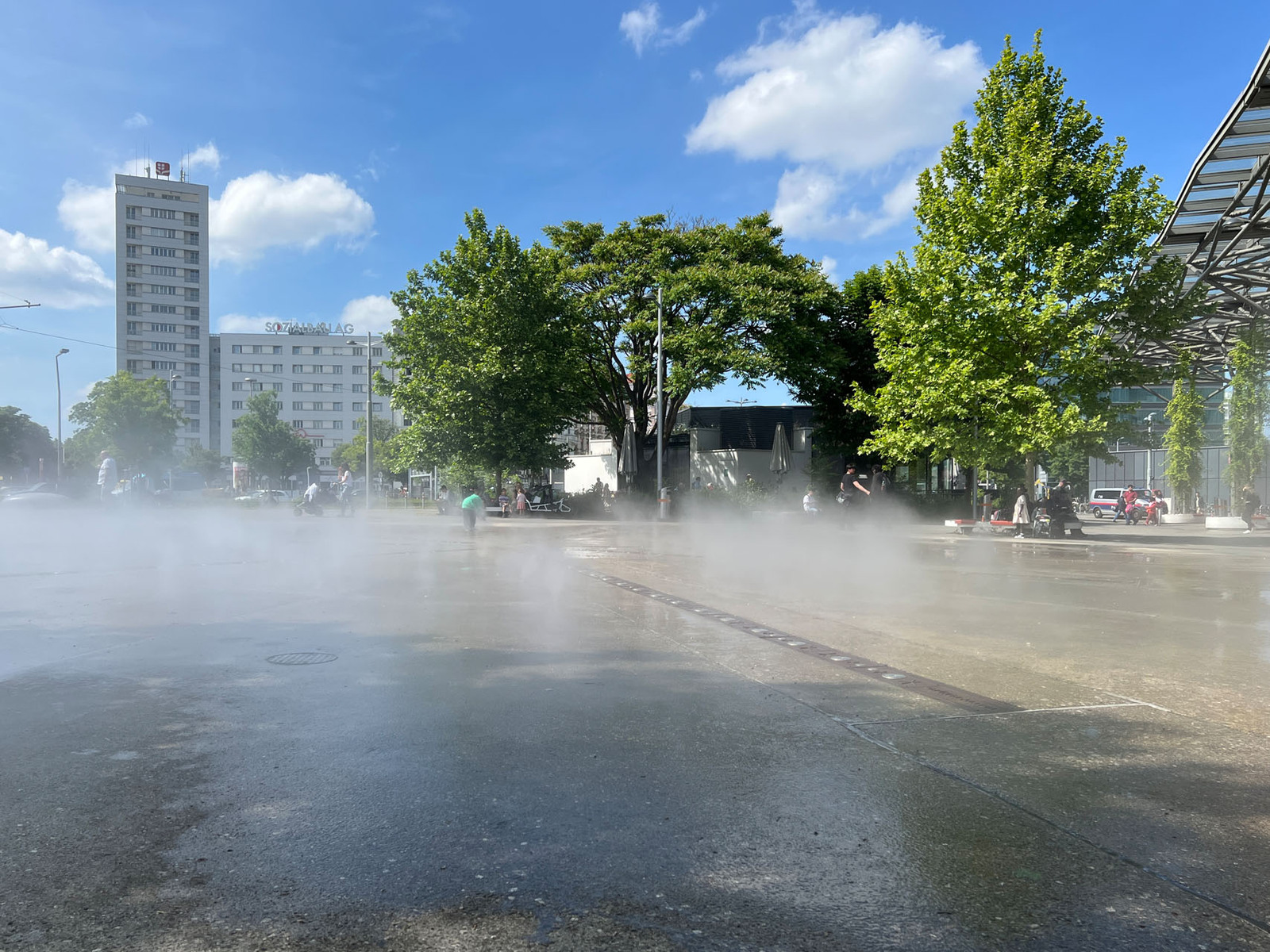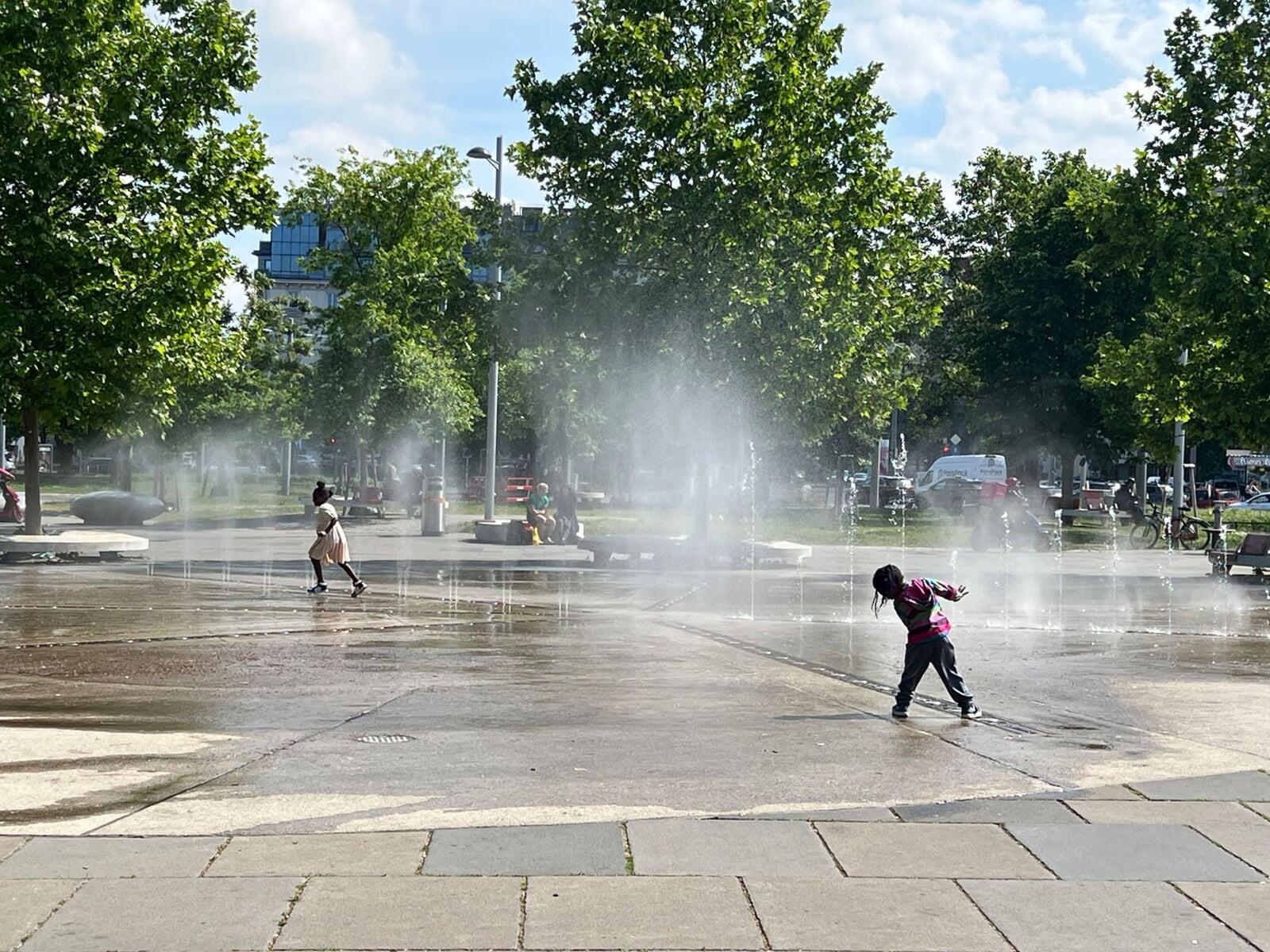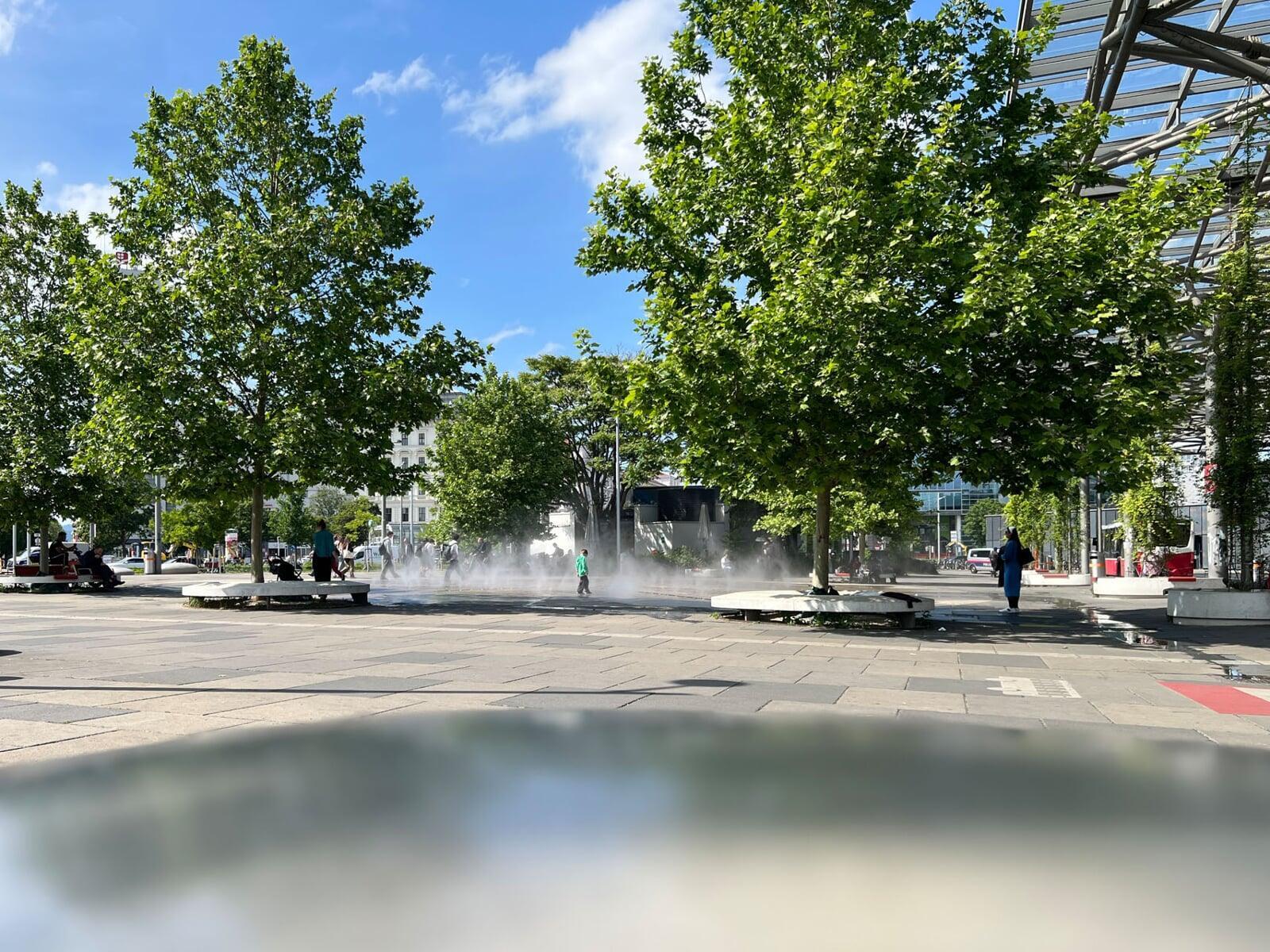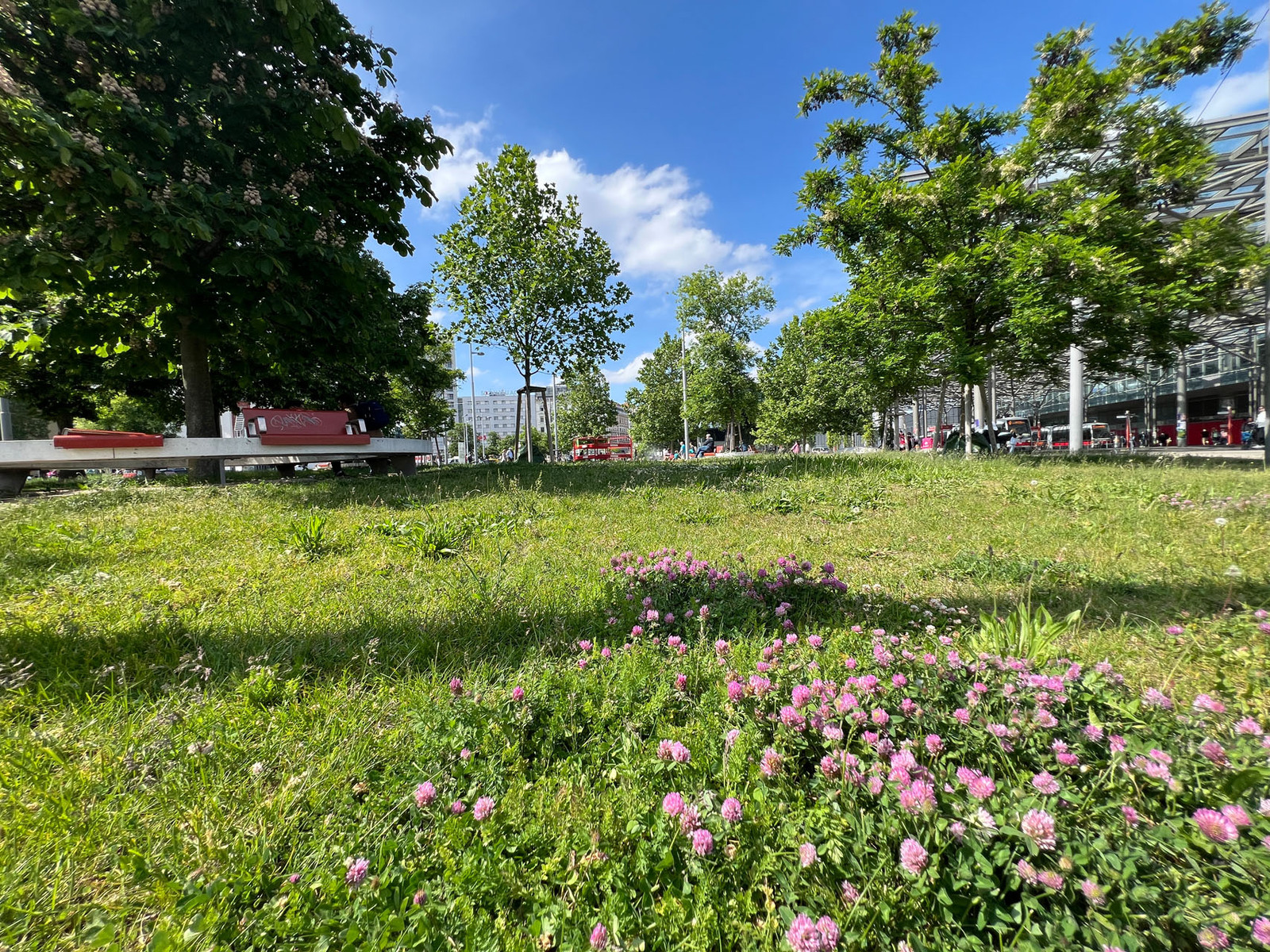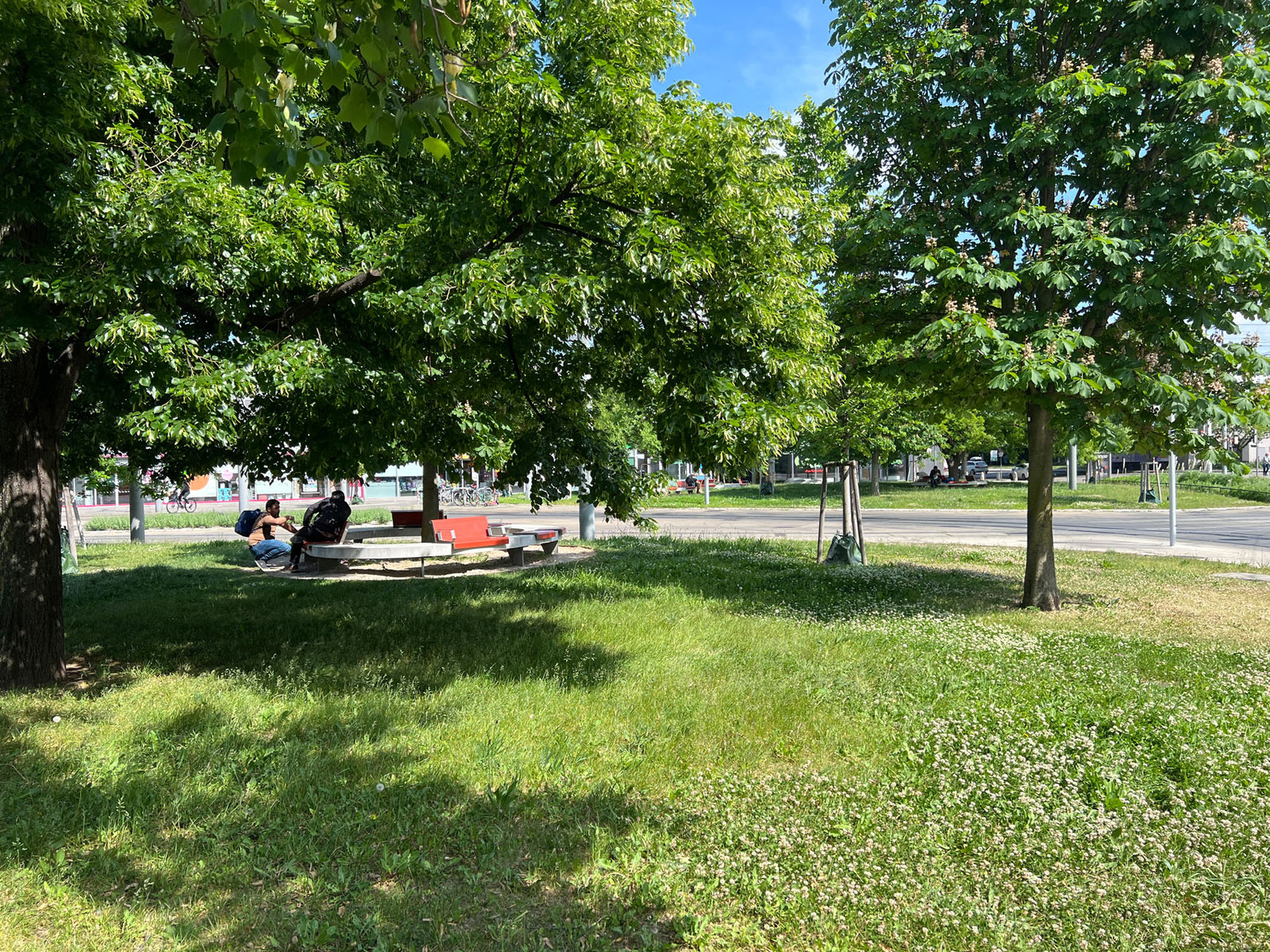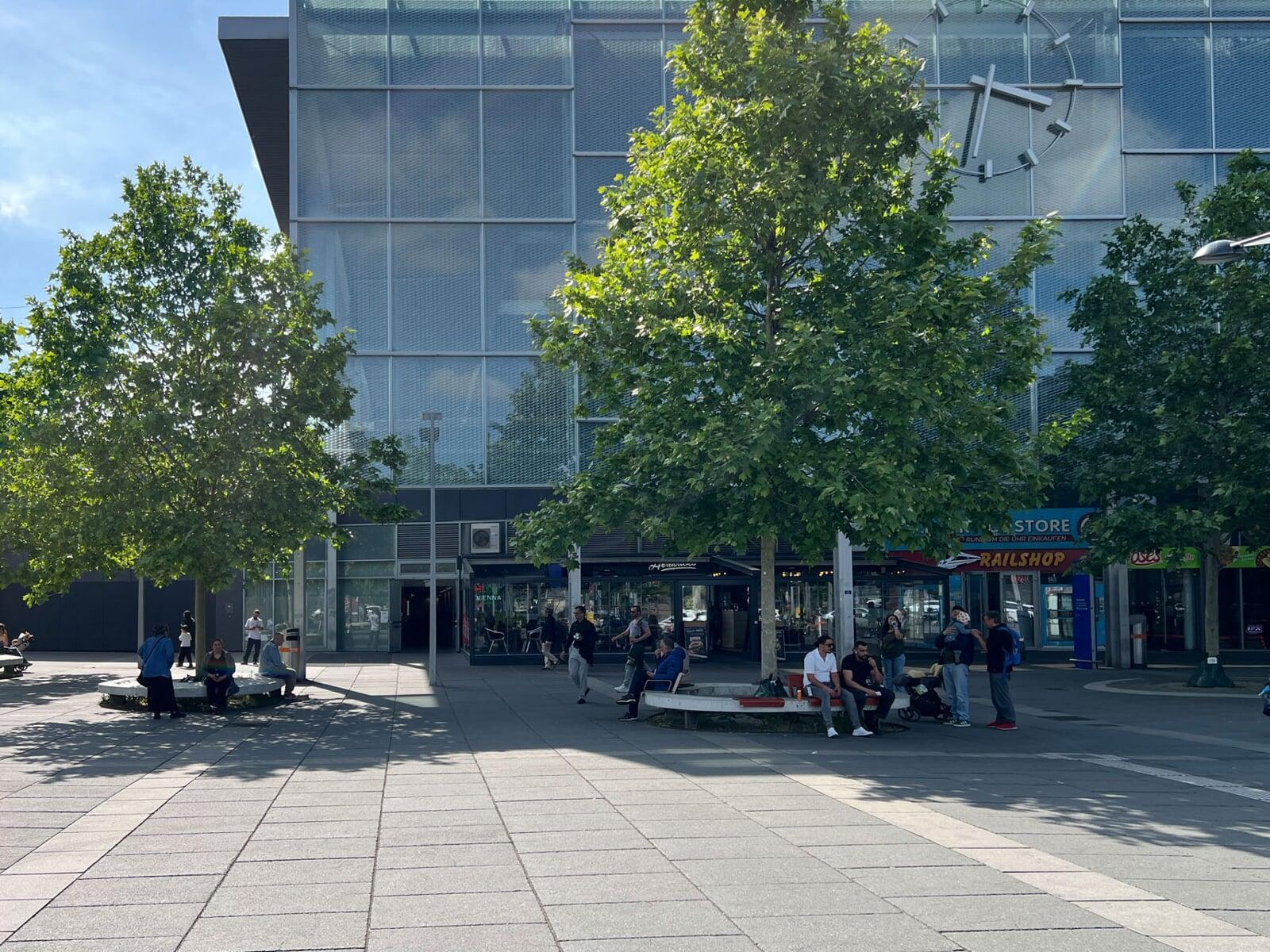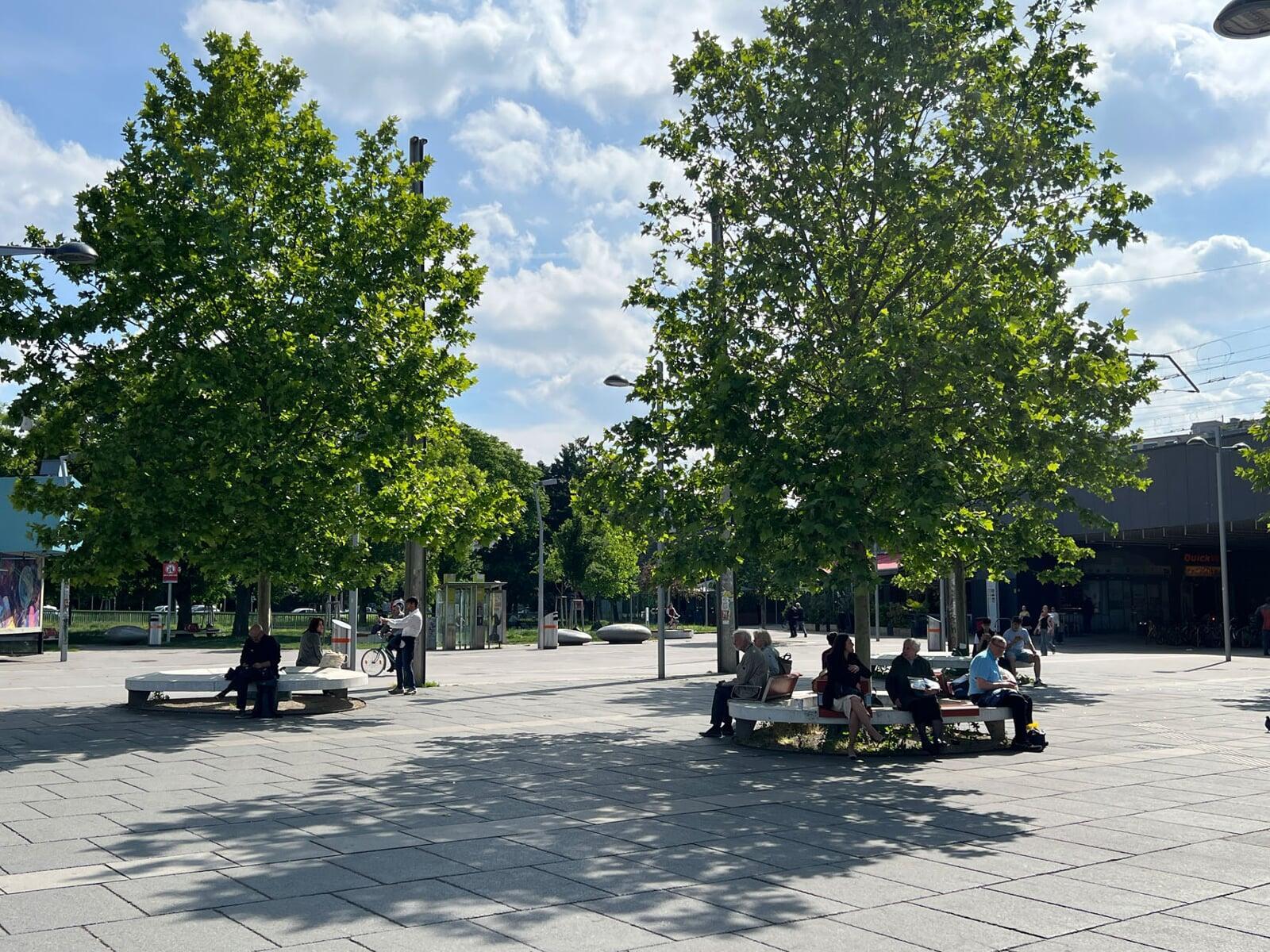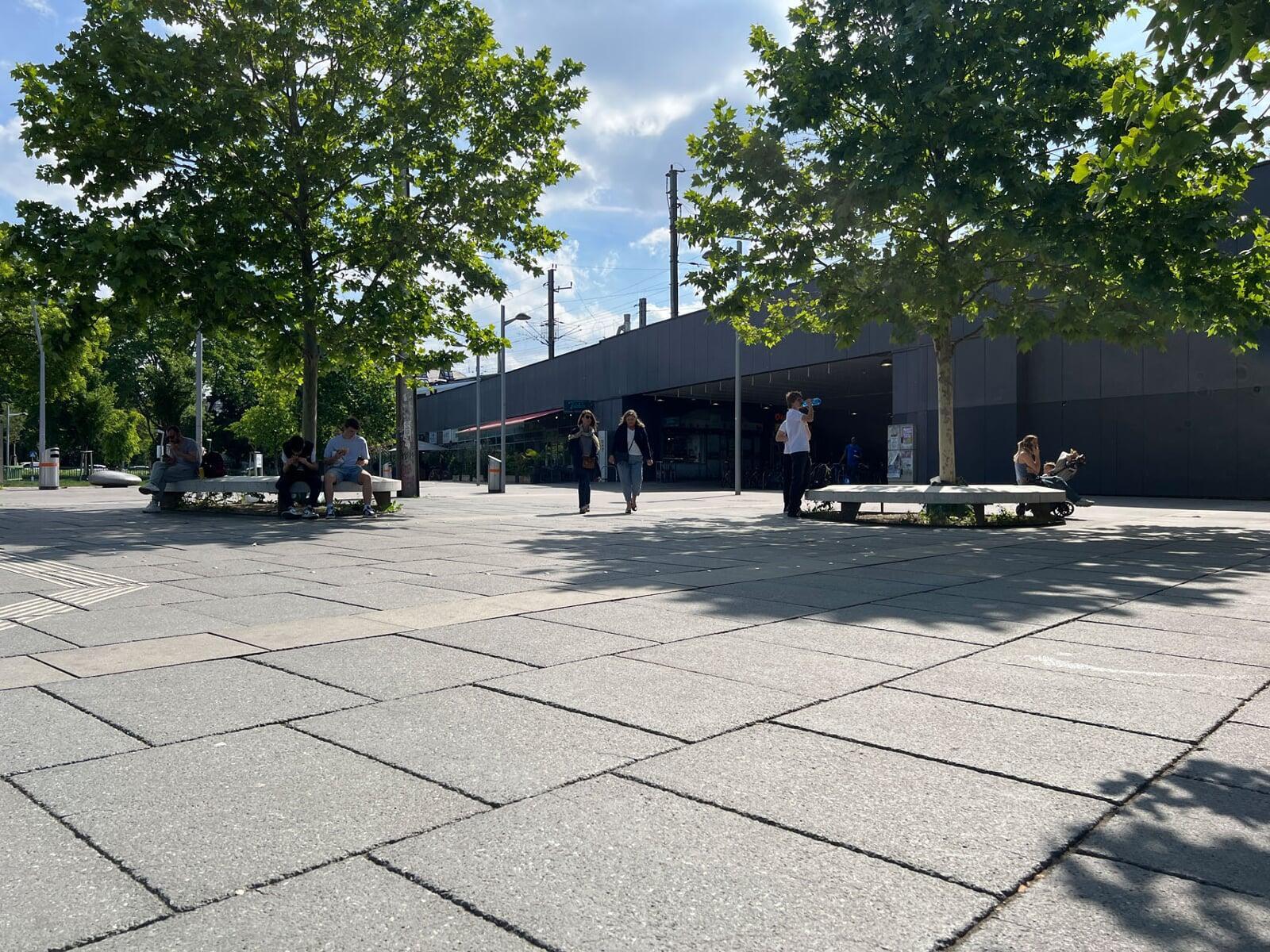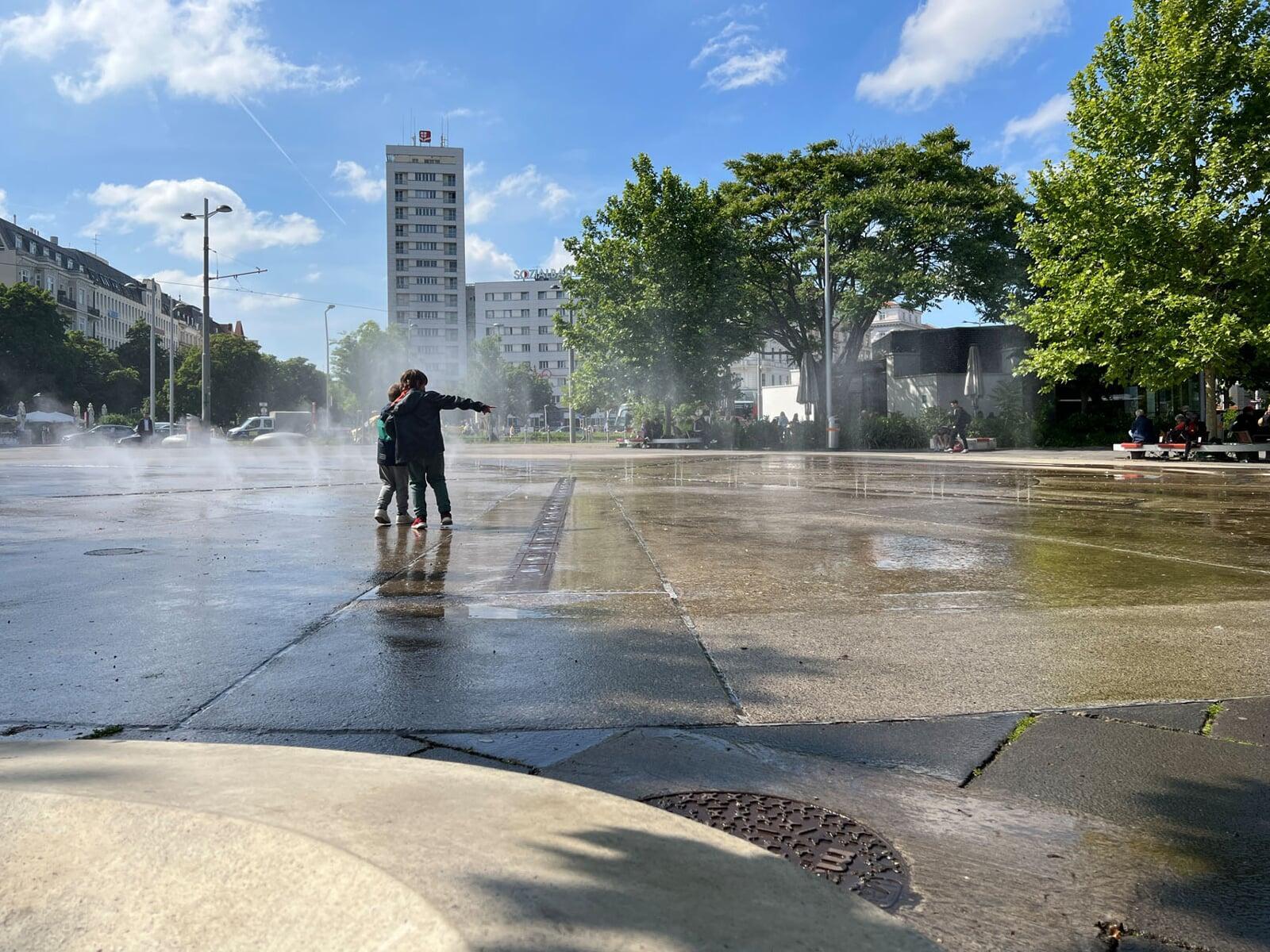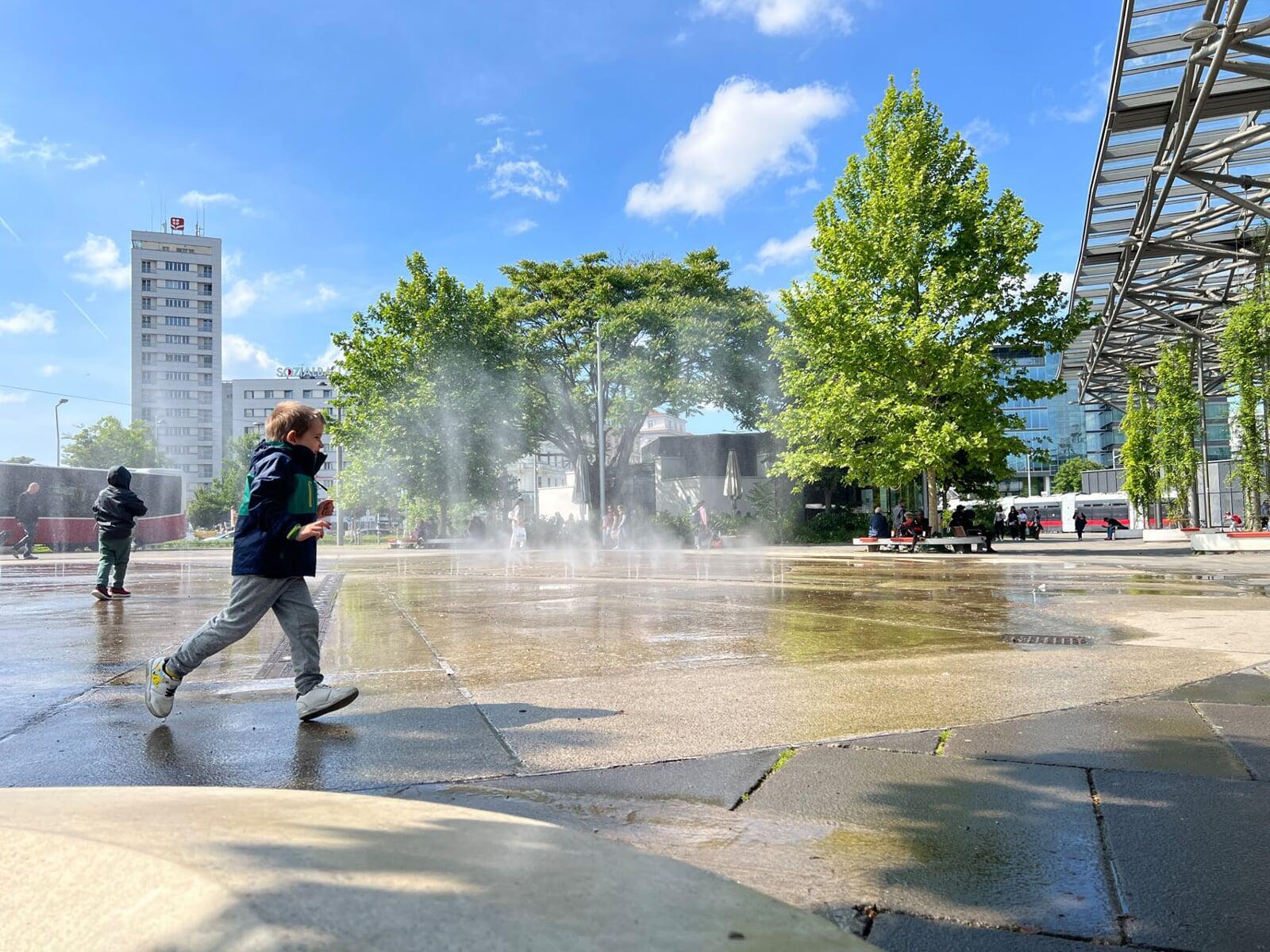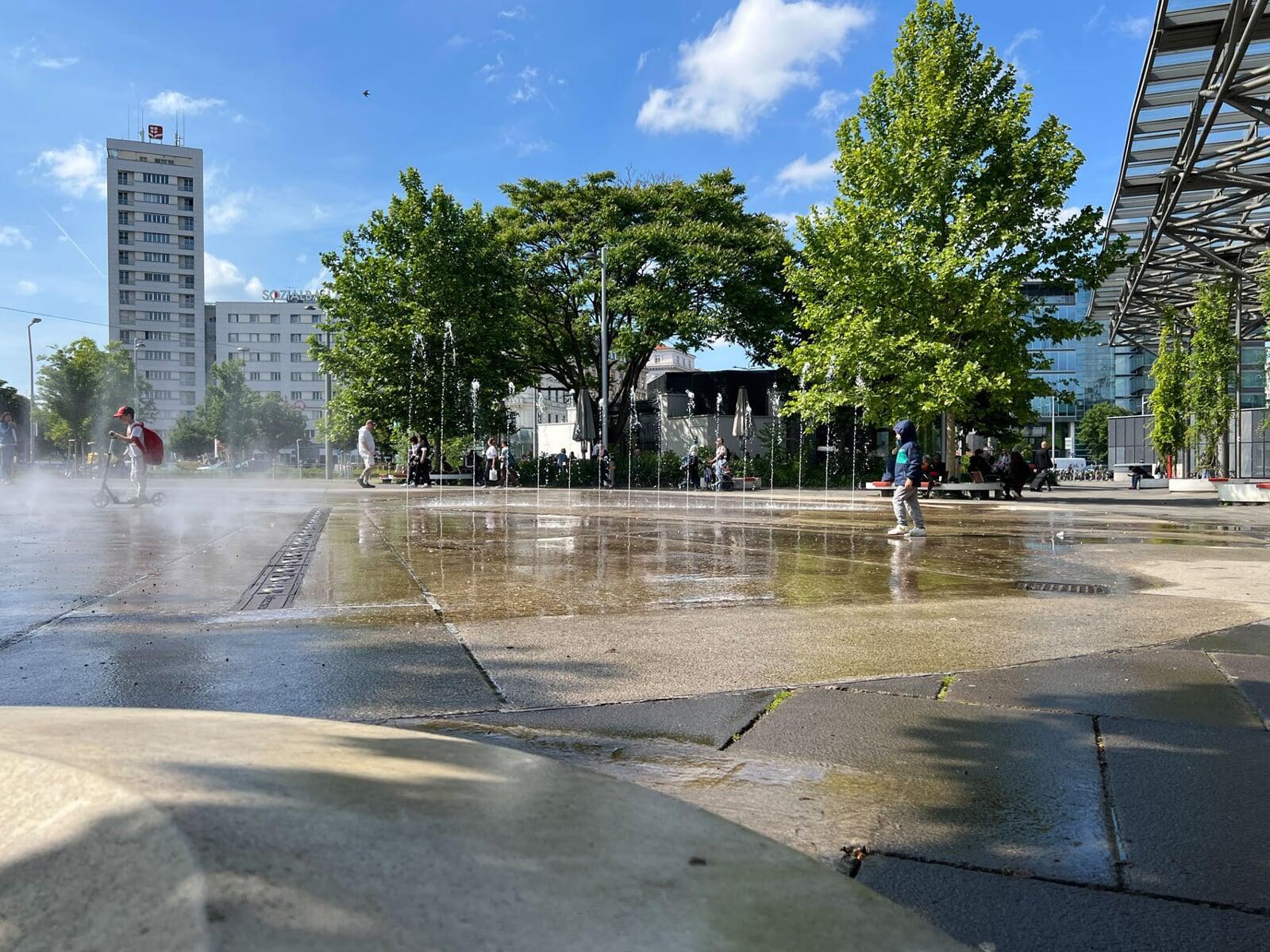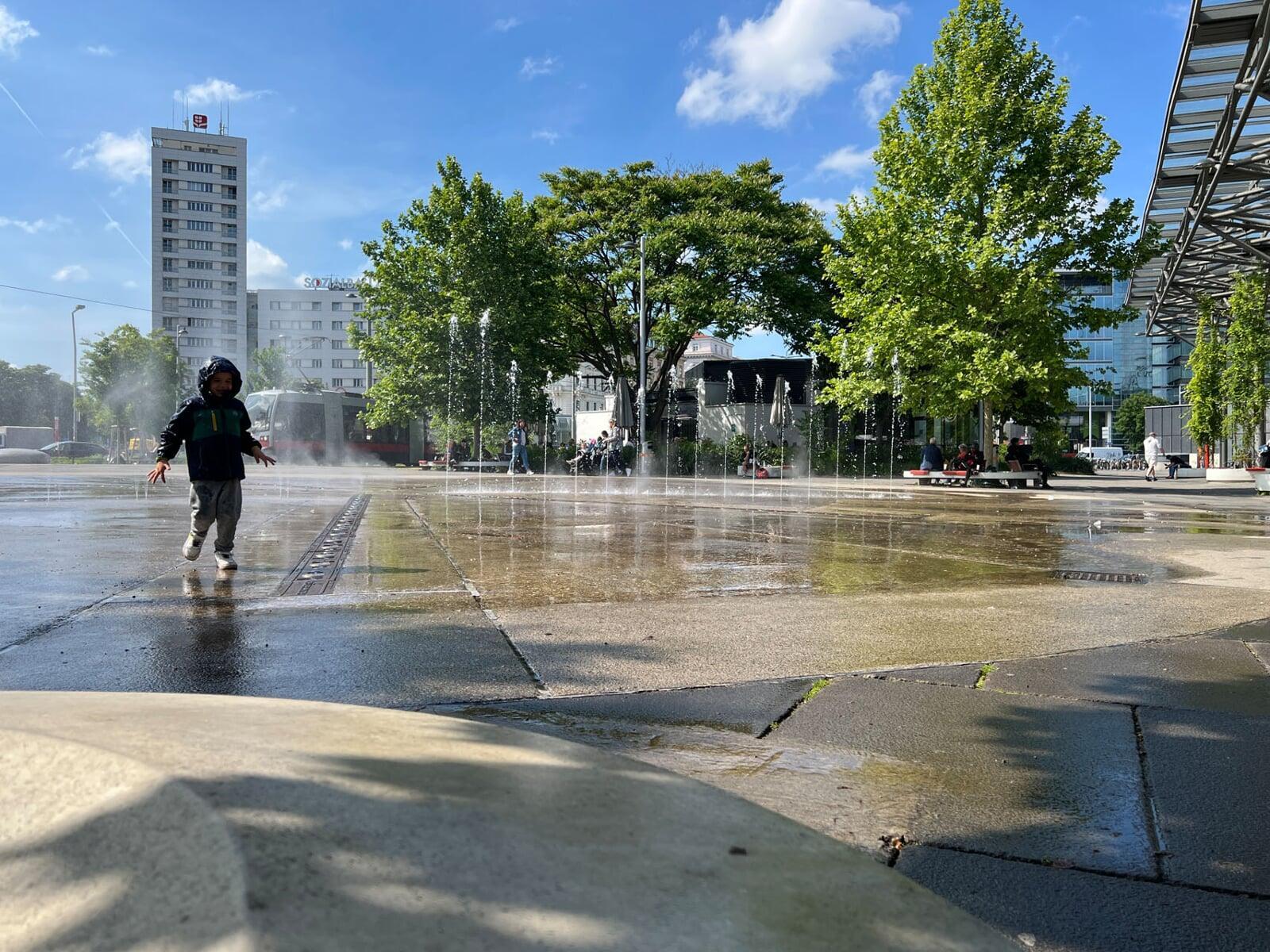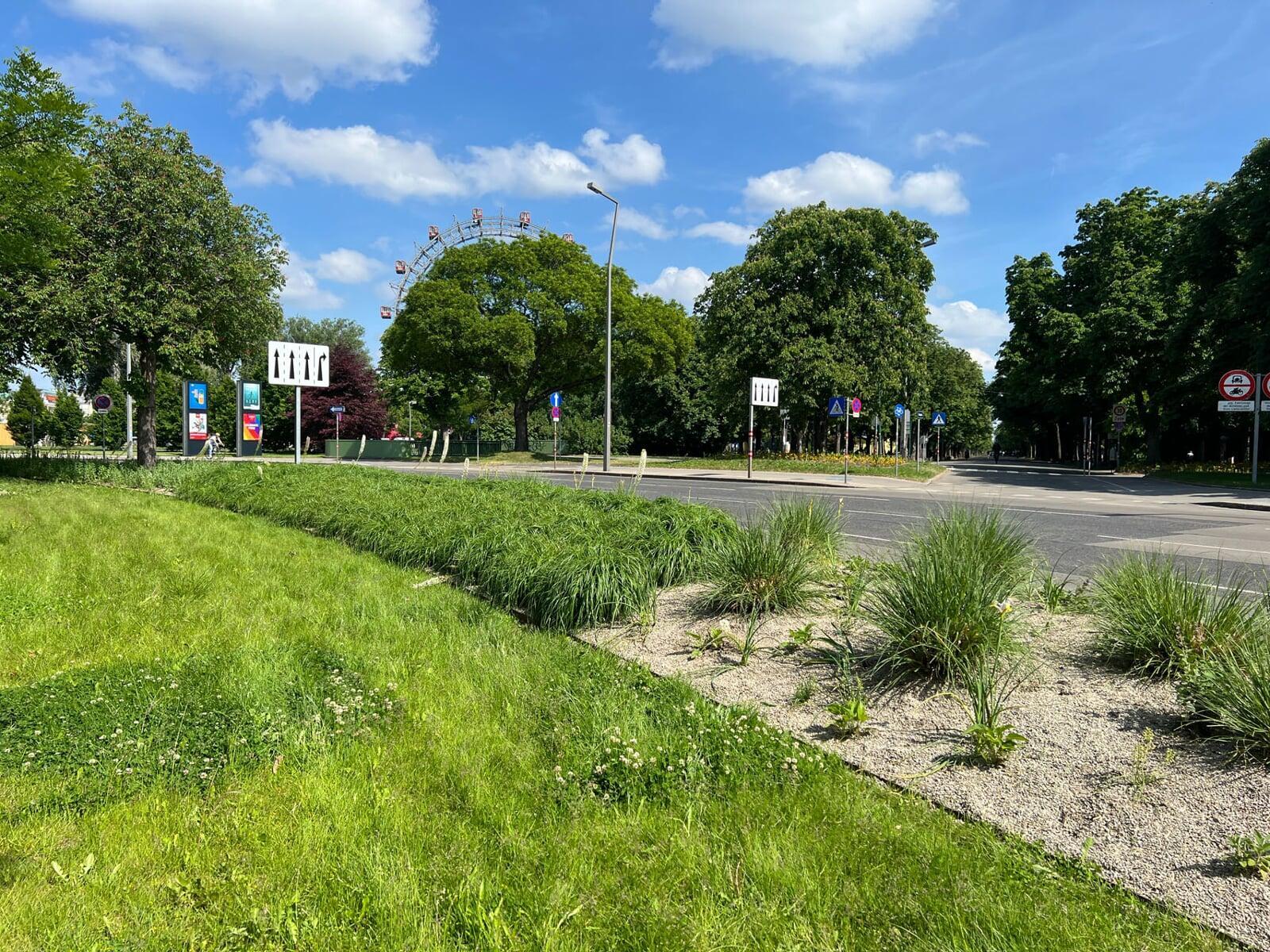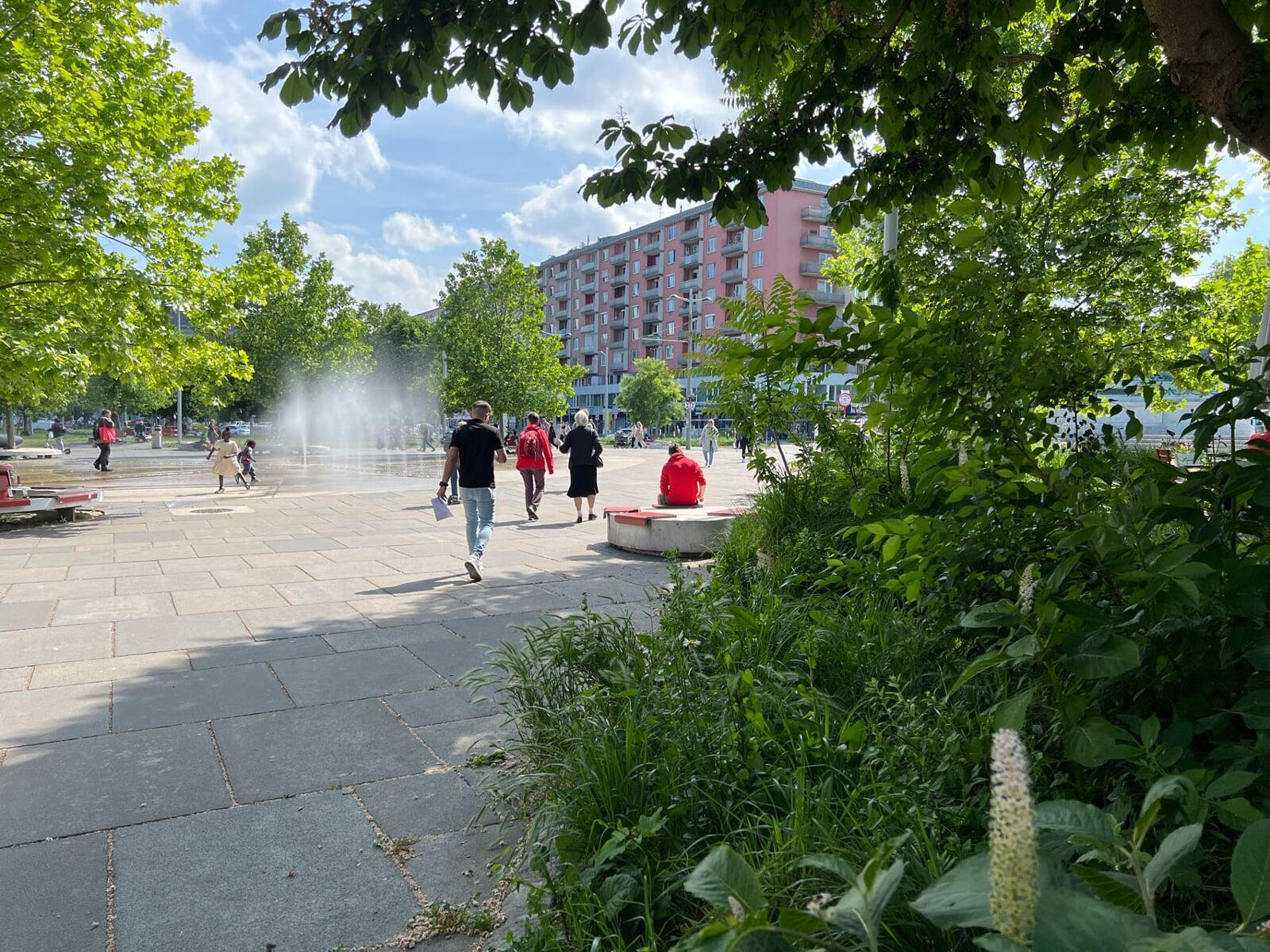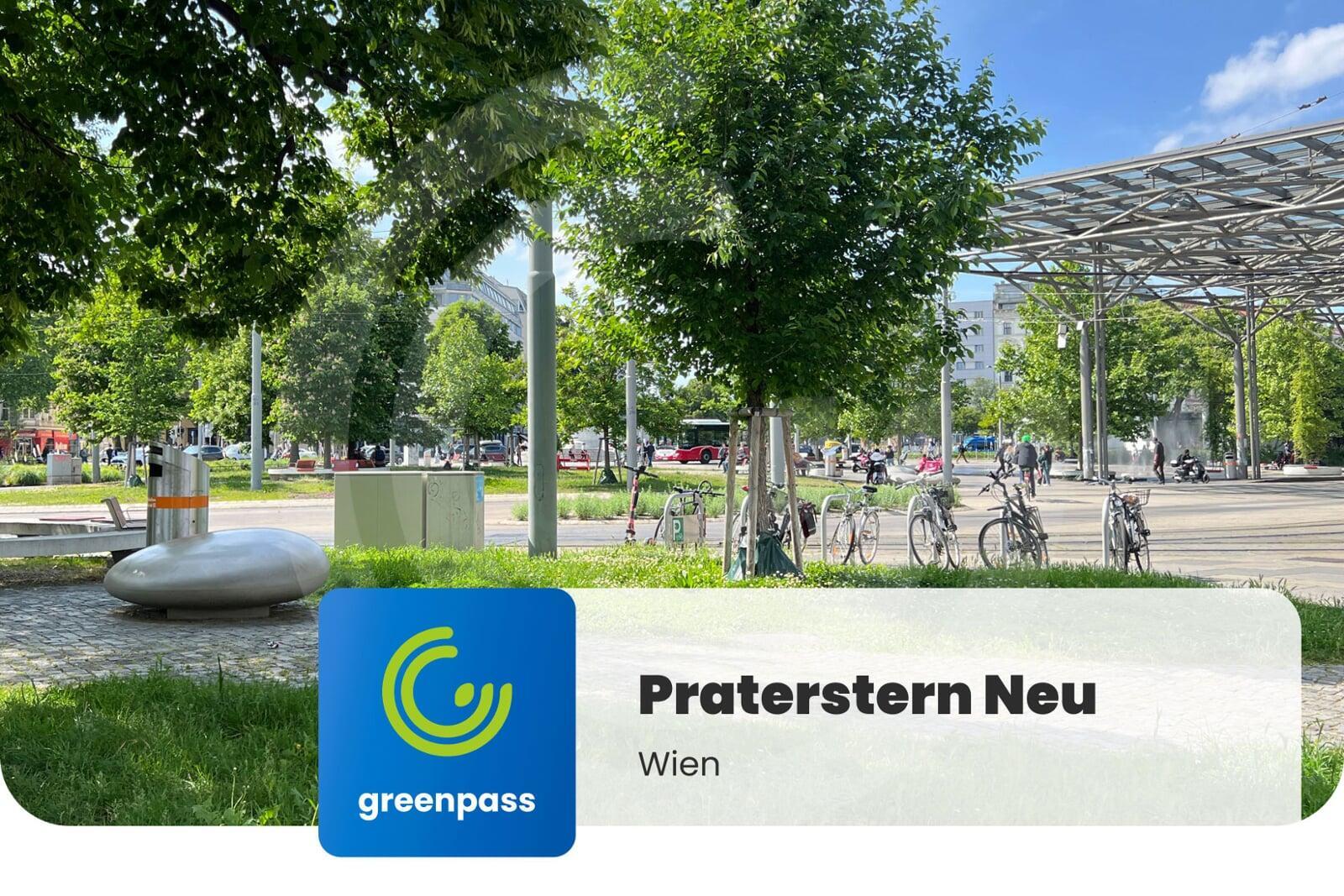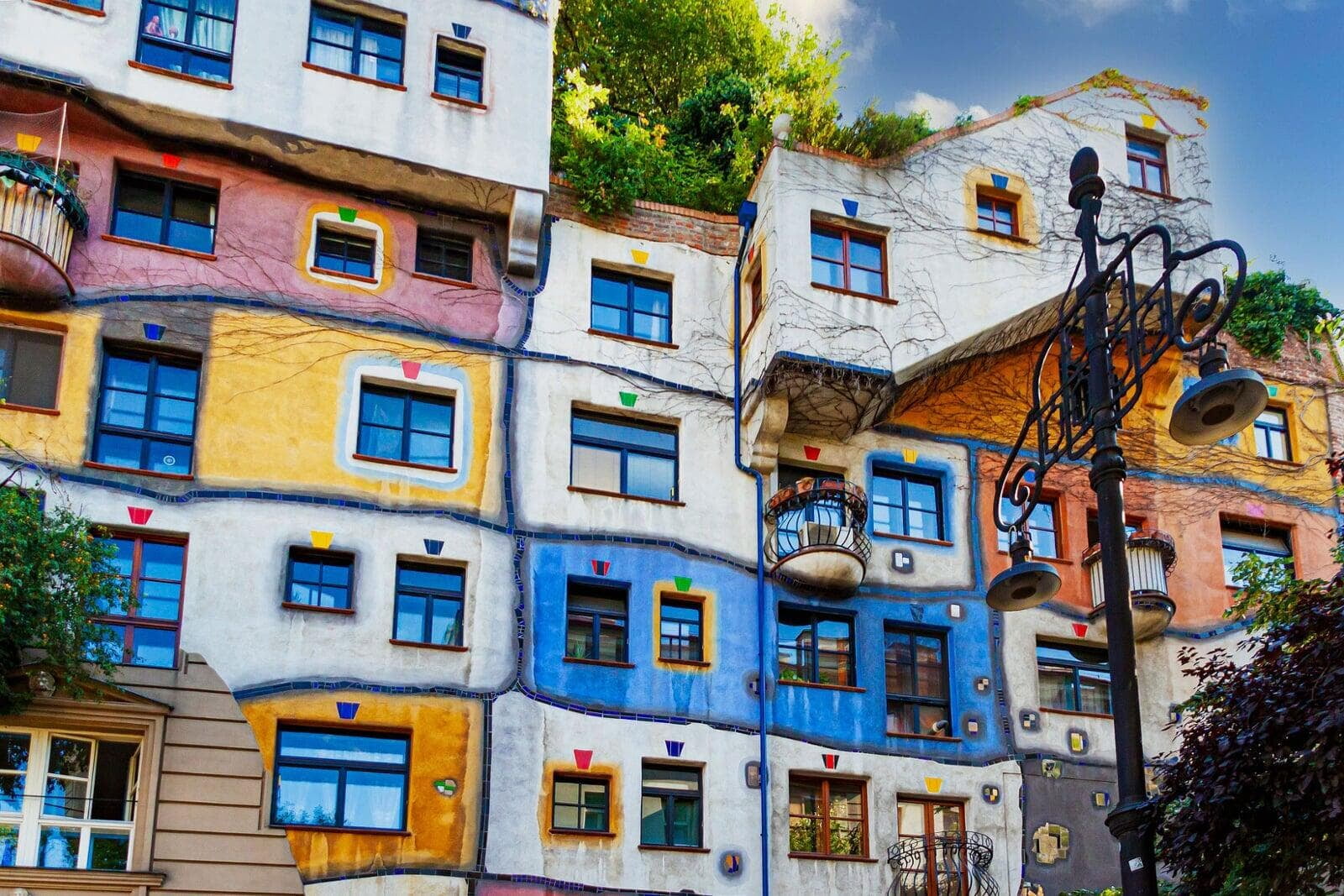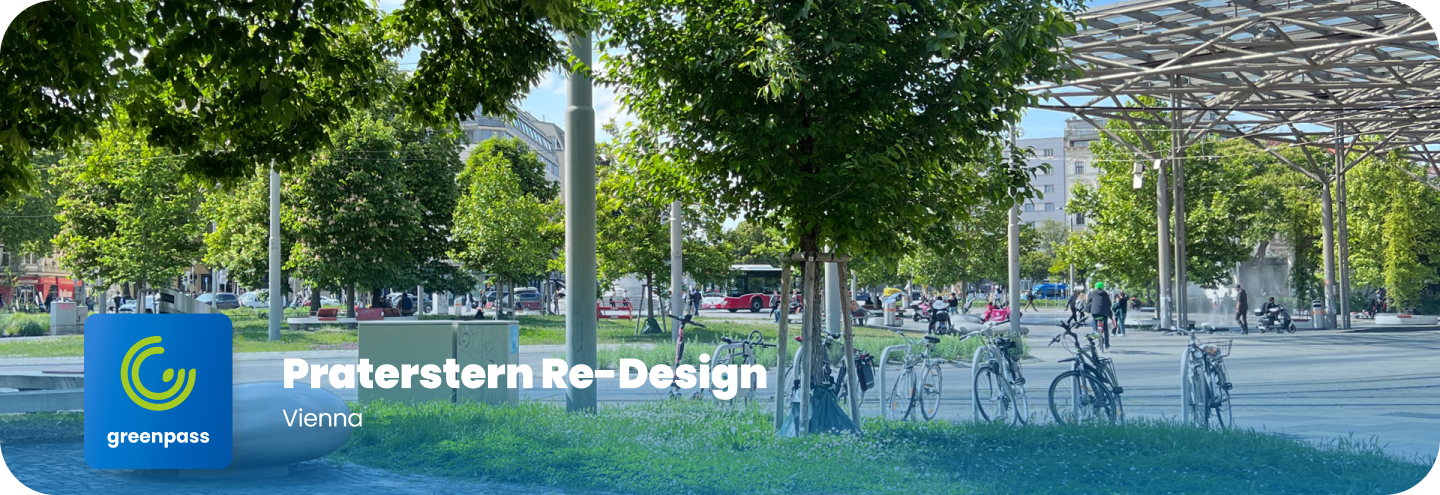
One of the hottest and most vibrant traffic junctions in the heart of Vienna has been transformed into a climate-friendly oasis of well-being with the support of greenpass and lots of green and blue
Climate-friendly square design
Following its redesign and renovation, Vienna's central transportation hub, Praterstern, has been transformed from a heavily sealed and inhospitable area into a green and cool urban oasis. During the transformation and planning, significant attention was paid to climate fitness, particularly for this important public space that tens of thousands of Viennese residents and commuters use intensively every day.
Adapting to climate change is one of the greatest challenges of our time. In the redesign of Praterstern, a close collaboration succeeded in using blue and green infrastructure in a targeted manner and with the greatest possible impact: The number of green spaces and trees was significantly increased – some of the new trees are particularly large plane trees, which provide the Viennese with the best possible cooling effect!

Jürgen Czernohorszky
City of Vienna | City Councillor for Climate, Environment, Democracy and HR
The city used the unique, software-based greenpass technology during the planning phase. As a foundation for the new planning by the Praterstern consortium (KENH Architects and DnD Landscape Planning), the first step was a detailed analysis of the existing site to identify the site's strengths and weaknesses.
Optimizing climate resilience
Fact-based impact performance
The result: 8,000 m² of green space, almost twice as much as before. 101 trees - also twice as many as before - provide valuable shade for the residents. The sponge city principle was also applied with 12 newly planted, climate-resilient trees.
The traffic junction is surrounded by a 1,400 m² slightly raised "green ring" featuring heat- and drought-resistant native perennials, grasses, and herbs. A 500 m² water feature consisting of jets, sprinklers, and mist makers provides a unique experience, depending on the temperature and season, and provides additional cooling or pleasant thermal comfort in hot weather.
Effective tree planting
The use of trees was optimized for their impact and optimally deployed. Data-driven and fact-based processes form the basis for the successful monitoring and management of climate change adaptation measures for contemporary and future-proof project developments in the city.
Our goal of improving the quality of life at Praterstern is only sensible and achievable today with a mix of climate change adaptation measures.

Paul Oblak
City of Vienna MD-BD | Project and program coordination
The public square offers large areas with high thermal comfort and cools the surroundings on a typical hot day compared to before. Thanks to the natural shade and the fogging technology, the perceived temperature (Physiological Equivalent Temperature) in summer is up to approximately -17°C cooler. To achieve this, the design was evaluated and optimized with regard to thermal comfort and various emotional classes.
How will the trees of 20 years perform today?
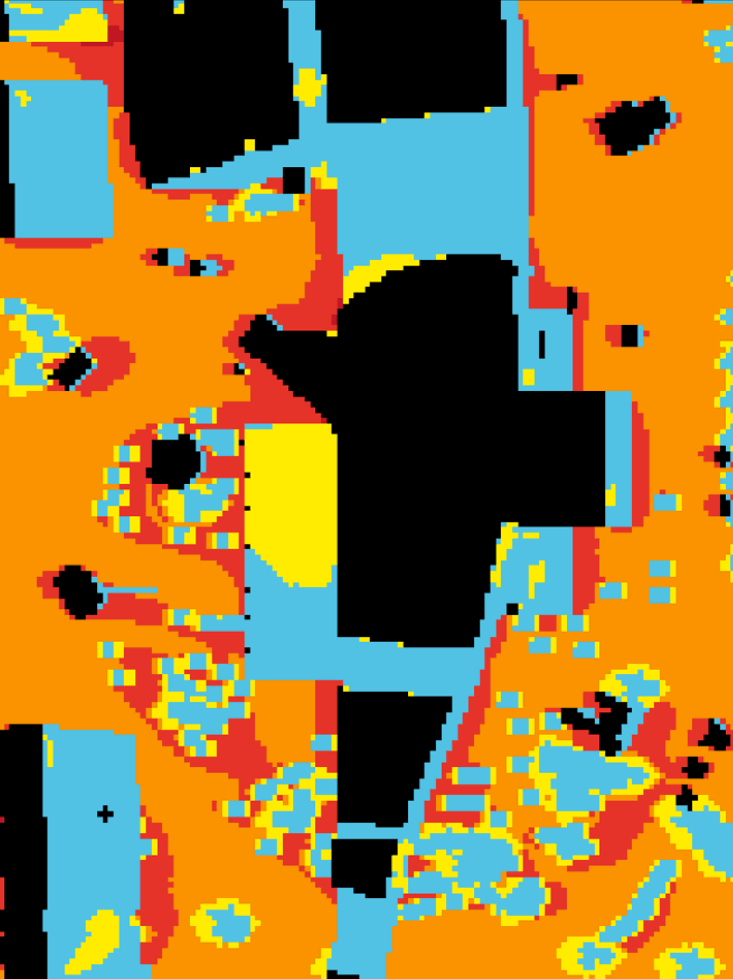
Green instead of grey
The measures also allow 25% more CO₂ to be stored compared to the previous level, and the trees, in particular, make an important contribution to climate protection. After a construction phase lasting approximately one year, the public space at Praterstern has been fully usable and popular again since summer 2022. The large-scale transformation of Praterstern from green to grey is thus a successful prime example of effective urban climate change adaptation.
It demonstrates a successful and contemporary transformation of urban space, in this case a former socially disadvantaged area, which is now used intensively and with joy in everyday life by a wide variety of people, both young and old. The project was awarded first place in the 2025 "Best Architecture" ranking in the landscape architecture category by Architektur Aktuell.
Conclusion
The project is a showcase example of climate-fit square design with an international character and shows how urban public open spaces can be redesigned in a sustainable and contemporary way.
This allows green and blue to be used in a targeted, efficient and effective manner for successful urban climate change adaptation and to sustainably improve people's quality of life.
Customer

Content
Project
Location

Choose your climate solution and ensure climate-proof open space
Discover more content
Popular posts
Subscribe to our newsletter now
Similar posts
More relevant content on related topics for you

